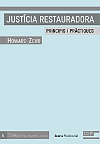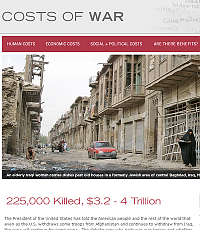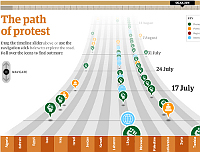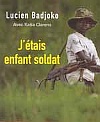Recommendations
More recommendations
-

Restorative Justice
Howard Zehr. Justícia restauradora. Principis i pràctiques. Barcelona: ICIP-Icaria, 2011.
What does justice mean when a crime has been committed? The criminal justice that prevails in Western societies has shown that a crime is a violation of the law and that justice requires that guilt is established and a punishment imposed; in short, that miscreants ultimately get what they deserve.
Restorative justice considers crime as a violation of the law and of human relations, and focuses on the needs and obligations arising from misdeeds. The questions it asks are: Who has been harmed? What are their needs? Whose are the obligations? Providing restorative justice involves us considering the harm done to the victims and their needs, offenders being called to account to repair the damage they have done, and victims, offenders and members of the community being involved in the process.
As its title suggests, this book provides an overview of restorative justice. The author, one of the founders of restorative justice and one of the authors who has contributed most to developing the concept, outlines some of the theory and practice involved, while clarifying its principles and philosophy.
E.G.
-

Costs of War
There is no doubt that after 9/11 an enormous amount of resources has been allocated to the fight against terrorism. But how much has it costs exactly? And what are the human and political costs of the counterterrorism measures taken? Additionally, what are the benefits of the post-9/11 wars and what are alternative (less costly and more effective) ways to prevent further terror attacks?
Answers to these questions are provided by an interdisciplinary research group coordinated by Brown University's Watson Institute –made up of more than 20 academics with backgrounds in Economics, Anthropology, Political Science, and Law.
Their website is definitely worth a look, as they have certainly come up with some interesting results. For example, the Costs of War project puts the wars' ultimate cost to the US at up to $4 trillion, pointing out that "many of the wars' costs are invisible to Americans, buried in a variety of budgets, and so have not been counted or assessed."
Particularly appealing is their distinction between economic, human, and political costs, and the fact that they don't just list numbers of civilian deaths, refugees and internally displaced people, but also analyse more complicated issues such as environmental costs, the wars' implications for women, and erosions in civil liberties and human rights violations. Additionally, apart from statistics, figures and charts you will also find interesting videos and information about the research methodology used.
L.v.T. & J.A.
-
United Explanations: the easy way to understand international affairs
United Explanations is a website, created in November 2010, which aims to analyze and explain international affairs in a clear, simple and easy way to understand. Wanting to bring the international reality closer to ordinary people, the website looks for connection points between the public and international events, showing that, as opposed to what many people think, international policies can have real consequences in our daily lives. The idea behind the initiative is that people's lack of interest in international affairs is often related to its complexity and that this difficulty of understanding leads to indifference and passivity. They therefore see helping people understand international affairs as the first step to raise awareness, and then to action.
Being a social entrepreneurship initiative, United Explanations is a website free of charge and accessible to all, written in several languages ??(including English, Spanish, Catalan, French, and Portuguese). It is a non-profit project and as such contributions are written on a voluntary basis (referred to as "donations"). The initiative relies on a team of 15 editors and around 90 voluntary contributors (referred to as "donors"), with a background in peace and security, politics, environment, culture, economics, gender, development, human rights, international law, and people and society.
L.v.T.
-

3D interactive timeline on Arab revolutions
Garry Blight; Sheila Pulham. Arab spring: an interactive timeline of Middle East protests. Guardian.co.uk
http://www.guardian.co.uk/world/interactive/2011/mar/22/middle-east-protest-interactive-timelineThe recent downfall of Muammar Gaddafi is only one of the many interesting events of the Arab revolutions that we have seen in the past couple of months. For those that might be losing track of the order of events, British newspaper The Guardian provides a very useful interactive timeline in which they have catalogued nearly ever major incident since the uprisings began in Tunisia, when Mohamed Bouazizi set himself on fire in protest after police confiscated his fruit and vegetables street stall.
Allowing you to trace key events by scrolling vertically through the 3D timeline, icons with different colours points out protests and government reactions against protest to protests (green), political moves (orange), regime change (red), and international and external responses (blue) in 17 different countries. Additionally, by rolling over the icons you find more information about the events as well as links to relevant news paper articles.
Apart from being very informative, the timeline is visually highly attractive with interesting interface and interaction elements and, although the timeline was already launched in March this year, it is regularly being updated, making it a very useful tool to better understand the continuous events of the Arab uprisings.
L.v.T.
-

I was a child soldier
Badjoko, L., & Clarens, K. (2005). J'étais enfant soldat. Paris: Éditions Plon.
He likes the sounds of war. He thinks he is playing, until he realises it's not a game. It's too late. He was a child from a wealthy background, until one day his life changed. He wants to be a hero, to fight for his homeland, to have a uniform, the feeling of power, until one day ...
He thinks about action films, and suddenly finds himself enlisting ... And then comes the first night, the first beatings, the fear, the blood, the anxiety, the death of the first children ... He won't forget it.
But after a few days, he has become one of them, a soldier, a child soldier, a kadogo. His goal is to survive. He suffers from nightmares. And hate.
And he starts to like the life. Alcohol, singing, dancing. The beatings continue, but he is no longer scared. Physical exercise, moral lectures, God, rage against the enemies, battle techniques ... He learns to obey orders, to ask no questions. He imagines a future paradise like the one that inspires Islamic suicide bombers.
Children who lose their friends because they tread on a mine. Friends who become enemies in the next war. They may be acquaintances in the future. Friends without arms asking the enemy for mercy.
One day he becomes a commander and they don't hit him any more - now he is the one doing the hitting. And killing and torturing becomes easier all the time. Revenge. Hutus, Tutsis. Revenge. And the nightmares return. Systematic and distressing. The fear returns.
Military discipline. Disease. Scars. Children with no feeling in their eyes. Children who never complain. And more friends blown up by mines. Contradictions.
The war makes him change sides and he goes through all its phases. He is also taken prisoner and tortured and is lucky to stay alive. But he no longer wants to live. Will he kill himself?
This book constantly highlights his ambiguous dual personality: a boy and a soldier. A relentless soldier. A boy who falls in love. It is a duality that is difficult to conceive, told with a passion and narrative quality that is hard to label. It is a life from a film that is intertwined with the recent history of the Congo, including civil wars and coups d'état. All this is told in a first person account. In almost childish language. It makes your hair stand on end.
J.A.